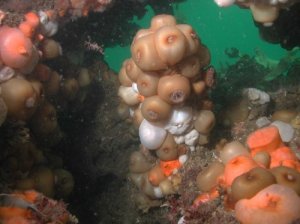|
|
About the project
Overall objectivities
The Baltic Sea is subject to severe environmental degradation caused by commercial and leisure activities such as dredging, fisheries, tourism, coastal development and land based pollution sources, placing increasing pressures on vulnerable marine habitats and natural resources.
 Conflicting priorities and lack of integrated management planning is a key obstacle for resolving the current state of affairs. An ecosystem-based approach to management, based on transnational spatial planning, would be a strong tool to overcome this challenge. Spatial planning, which integrates complex information on marine landscapes, habitat distribution, economic values and conservation status with information on user practices and stakeholders dependence on natural resources, is a needed for a holistic planning and informed decision-making. It would also contribute to a cost-effective and successful implementation of EC Directives, HELCOM recommendations and related policy documents. For example, transnational spatial planning can assist implementation of the measures set in place for protecting the ecosystem structure, such as the Natura 2000 Network, by facilitating a balanced designation of sites representing a continuum of marine habitats and promote "blue corridors" between protected sites. Conflicting priorities and lack of integrated management planning is a key obstacle for resolving the current state of affairs. An ecosystem-based approach to management, based on transnational spatial planning, would be a strong tool to overcome this challenge. Spatial planning, which integrates complex information on marine landscapes, habitat distribution, economic values and conservation status with information on user practices and stakeholders dependence on natural resources, is a needed for a holistic planning and informed decision-making. It would also contribute to a cost-effective and successful implementation of EC Directives, HELCOM recommendations and related policy documents. For example, transnational spatial planning can assist implementation of the measures set in place for protecting the ecosystem structure, such as the Natura 2000 Network, by facilitating a balanced designation of sites representing a continuum of marine habitats and promote "blue corridors" between protected sites.
Today, a set of technical constrains halt the use of an integrated BS management approach, including lack of transnational habitat maps, lack of data, tedious data exchange, inconsistent data formats, and generally poorly co-ordinated efforts between agencies and stakeholders. BALANCE will provide the BSR with key information and much-needed spatial planning tools that can overcome such problems. These will assist agencies and key stakeholders in planning and implementing effective management solutions for sustainable use and protection of our valuable BS landscapes and unique natural heritage.
BALANCE aims to:
- develop transnational marine spatial planning tools and an agreed template for marine management planning and decision-making. It will be based on 4 transnational pilot areas demonstrating the economical and environmental value of habitat maps and marine spatial planning (exemplified through 2 zoning plans). The tools and zoning plans integrates biological, geological and oceanographic data with local knowledge from stakeholders;
- develop the "blue corridor" concept and promote "blue corridors" between protected sites adding spatial development dimensions to the implementation of EC Directives;
- assess if the Baltic marine Natura 2000 network is ecological coherent and adequately represents & protects a continuum of habitats;
- develop a communication strategy for stakeholder involvement to ensure that objectives and decisions address local stakeholders needs and that products is used and understood by the end of project;
- disseminate project outputs to key users and public through various media, including a project web site, enhancing awareness of the marine natural heritage and the benefits of sustainable resource use.
The spatial planning tools include:
a) BS marine landscapes presented in GIS maps;
b) a holistic approach to marine habitat mapping integrating data on benthic, pelagic & fish habitats in 4 transnational pilot areas;
c) development of habitat models for areas with little biological information;
d) templates for zoning plans in 2 pilot areas, including planning guidelines and criteria to evaluate management success;
e) meta-database for BS marine data, outlining data formats, techniques and data availability for use by stakeholders in future planning;
f) development of agreed protocols for habitat mapping based on intercalibration of existing national protocols, ensuring compatible data for future transnational mapping.
|
 |
|
